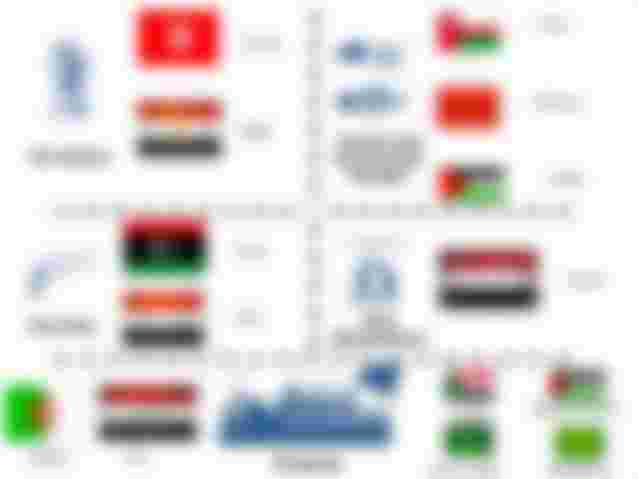On the 17th of December 2020, it was 10 years since the outburst of the Arab Spring, a revolution that toppled regimes and dictators. Many revolts sparked in some of the Arab countries and now, after 10 years, we could say that the region has been changed. But not all of them have achieved their goal. Some were violently suppressed by leaders. Below, I will present some key events of the Arab Spring.

The Tunisian beginning
It is well known that the Arab Spring started in Tunisia, on December 17, 2010. What happened is that a young Tunisian man set himself afire, to protest against police violence. The man was just a vendor who sold vegetables. He later died on the 4th of January 2011, but from the moment he set afire, thousands of people gathered the streets asking for constitutional changes and better living conditions. His gesture was posted on the Internet and millions of people saw it. The revolution has achieved its purpose, because the Tunisian leader, President Zine El Abidine Ben Ali resigned a few days later. He represented the first authoritarian leader that has been pushed out by protests. These events inspired people from neighbouring countries also and it went even further.
On the 23rd of October 2011, in Tunisia has been held the first free election round. The Ennahdha movement won.
Step 2 - Mubarak's Egypt
Egypt is a neighbour of Tunisia, so on the 25th of January 2011, people asked for the resignation of the former President, Hosni Mubarak. They took the streets of the major Egyptian cities and in Cairo also, the capital. They were fed up with corruption and poor living conditions and when the crowds gathered almost 1 million people, on the 11th of February, the President resigned and the control was put in the hands of the military. Still, nothing good came out of this, because in 2012 Mohammed Morsi was elected President and his government was directly linked with the Muslim Brotherhood. He only stayed in power 1 year, because the current President, Abdel Fattah el-Sisi, overthrown him through in a military coup d'etat.
Strike 3 - Bahrain
As I was saying, most of the Arab countries were hit by protests and after Egypt, was Bahrain's turn. Protests outburst in the capital and people were asking for constitutional and many other reforms. This time, the crowds were met with violence and fire from the police and it ended abruptly, with victims among civilians.
Gaddafi's end
The protests in Libya started on the same day as in Bahrain, on the 15th of February 2011. Police used violence to re-establish order in Benghazi and from that moment, the uprisings transformed in a civil war. It is well known that France, the UK and the US-supported those that were against Muammar Gaddafi. The leader was later captured, on the 20th of October 2011 and killed on the spot by rebels. Now, after 9 years, Libya is a disaster, politically, economically and socially.

Assad targeted
Almost a month later, on the 6th of March 2011, protests began in Syria as well. It all started after some teenagers were tortured by the police after writing on a school wall "Your turn, doctor". The doctor was President Bashar al-Assad who is an ophthalmologist. So, the police abuse against the teenagers sparked protests in the capital and in major Syrian cities. People were asking for democratic constitutional changes. The government tried to suppress the revolution with fire and what followed was a bloody civil war that is still ongoing. Not to mention that the unrest helped ISIL rise, the terrorist organization that killed thousands of civilians.
The disaster of Yemen
Yemen was also hit hard by the Arab Spring and the president who ruled the country for almost 33 years was removed from power in the 27th of February 2012.
This article was written by @Steve_BA a submission for the $10 Contest.


First time reading about the Arab Spring revoluton.